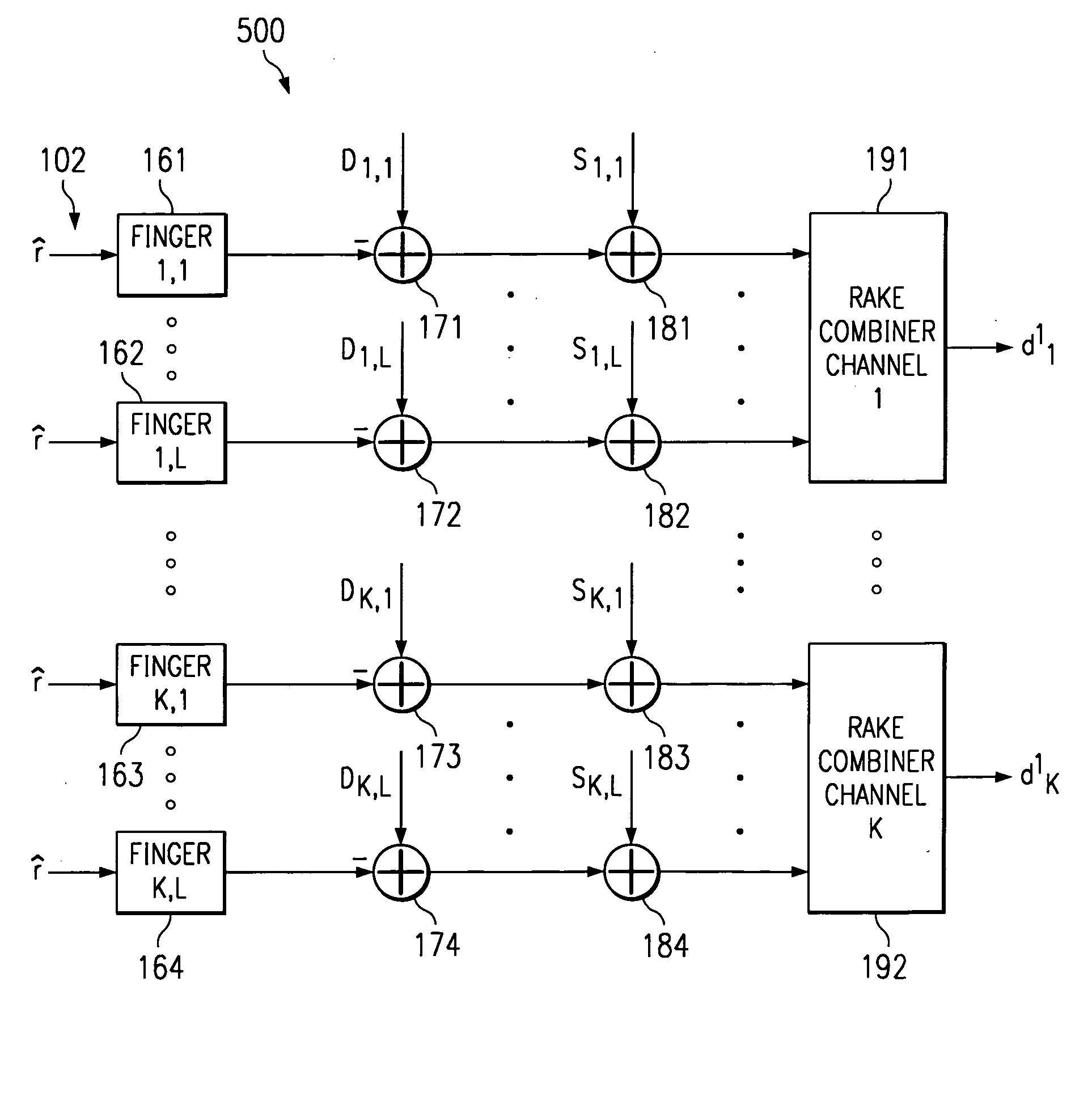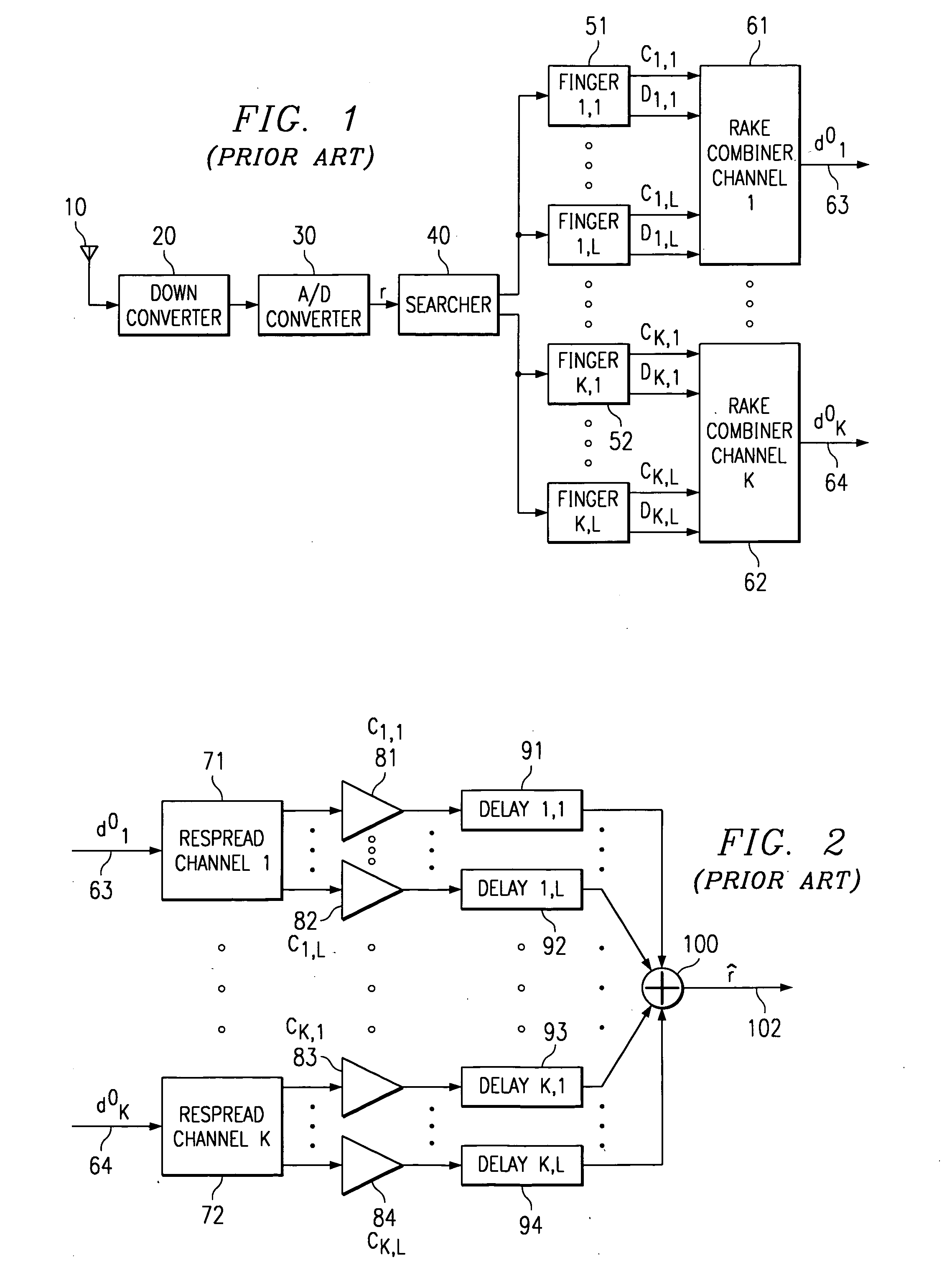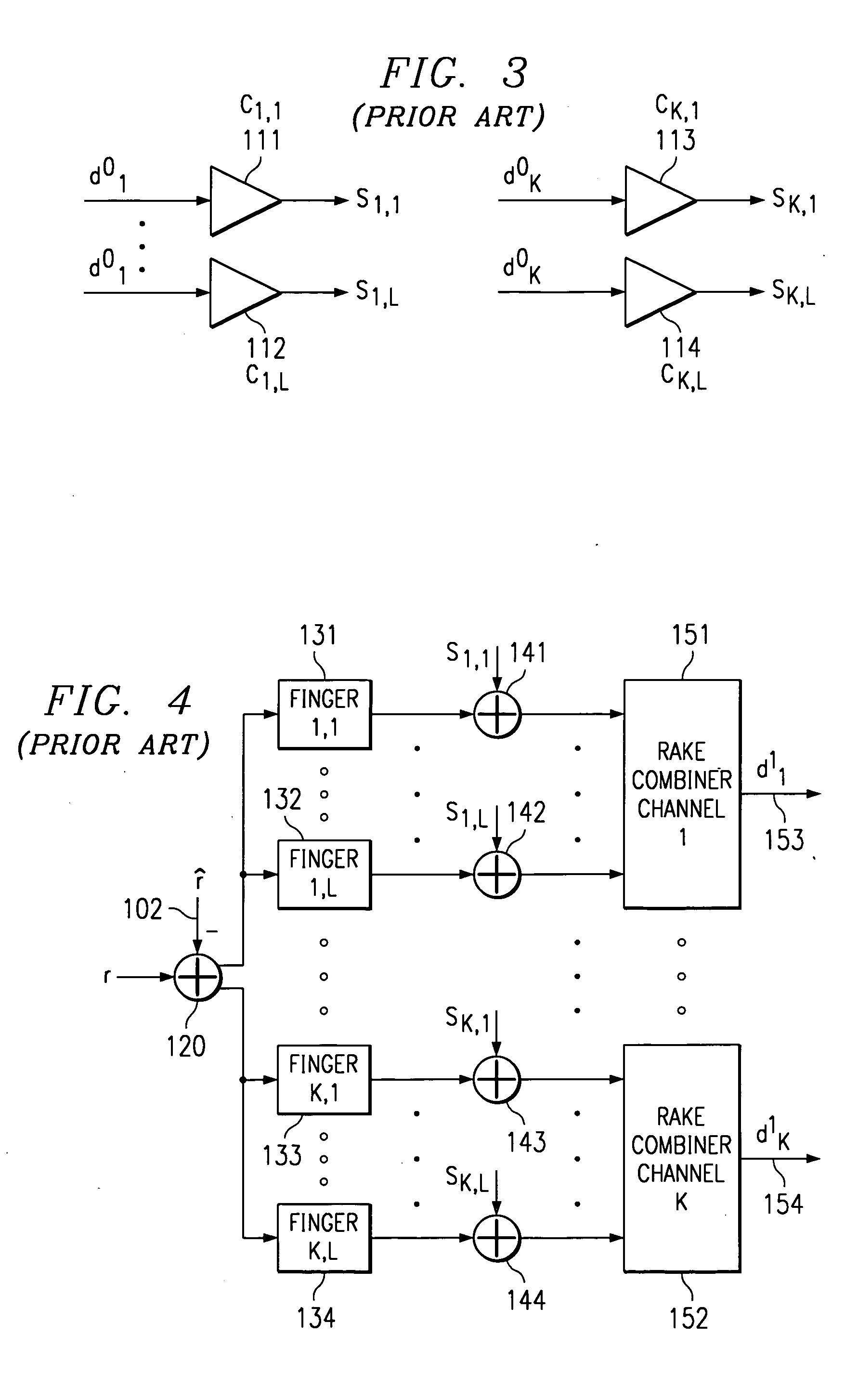Method and apparatus for spread spectrum interference cancellation
a technology of spread spectrum interference and apparatus, applied in the field of radio communication, can solve the problems of increasing the design cost, limiting the capacity of cdma systems, and putting a significant burden on the overall receiver design, and achieve the effect of increasing the overall ic complexity
- Summary
- Abstract
- Description
- Claims
- Application Information
AI Technical Summary
Benefits of technology
Problems solved by technology
Method used
Image
Examples
Embodiment Construction
[0032] While the specification concludes with claims defining the features of the invention that are regarded as novel, it is believed that the invention will be better understood from a consideration of the following description in conjunction with the drawing figures.
[0033] The following description can apply to both the base station and the mobile station of a spread spectrum code division multiple access (CDMA) communication system. A system with K users and L multipaths per user's signal is assumed. Also, although the discussion will use the same number of multipaths for each user's signal, the number of multipaths for each can be different for each user's signal but this does not affect the applicability of the disclosed invention while it makes its description clearer.
[0034] The proposed IC approach in accordance with the present invention is described in FIG. 5. According to the invention, the regenerated estimated signal 102 is first despread in the IC block 500 by a plur...
PUM
 Login to View More
Login to View More Abstract
Description
Claims
Application Information
 Login to View More
Login to View More - R&D
- Intellectual Property
- Life Sciences
- Materials
- Tech Scout
- Unparalleled Data Quality
- Higher Quality Content
- 60% Fewer Hallucinations
Browse by: Latest US Patents, China's latest patents, Technical Efficacy Thesaurus, Application Domain, Technology Topic, Popular Technical Reports.
© 2025 PatSnap. All rights reserved.Legal|Privacy policy|Modern Slavery Act Transparency Statement|Sitemap|About US| Contact US: help@patsnap.com



